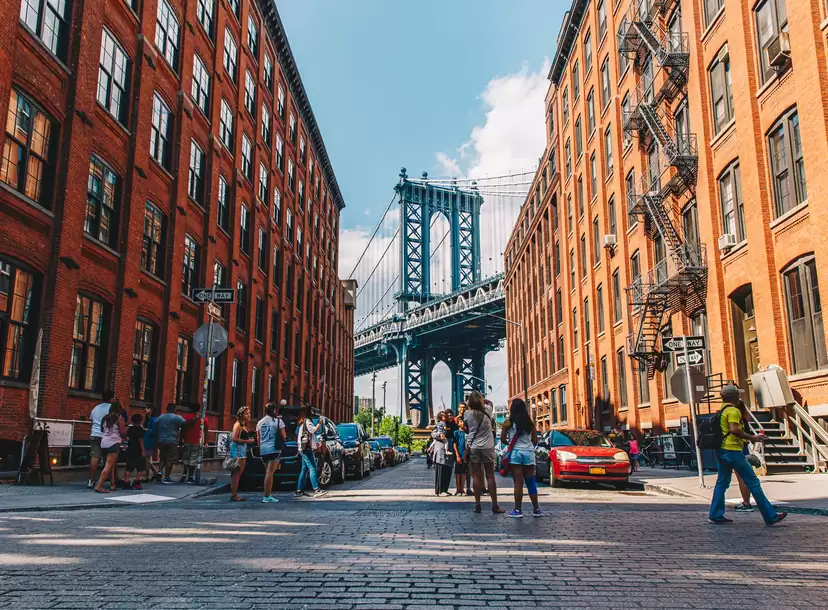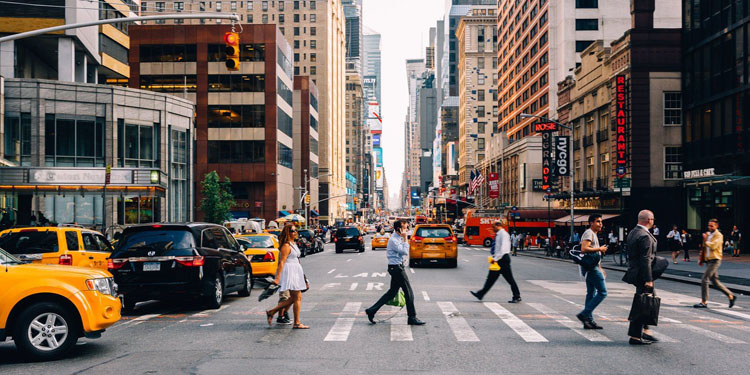Washington Street is a historic thoroughfare in the heart of New York City, weaving through the vibrant neighborhoods of Lower Manhattan. Stretching from Battery Park to Tribeca, this iconic street is a microcosm of the city’s rich history, diverse culture, and architectural evolution. As one ambles along Washington Street, they traverse centuries of stories embedded in its cobblestone paths, towering skyscrapers, and hidden gems that contribute to the tapestry of the city that never sleeps.
The southernmost tip of Washington Street, nestled in Battery Park, offers a serene escape from the urban bustle. With the Statue of Liberty and Ellis Island standing proudly in the background, this section of the street provides a picturesque view of New York Harbor. The area has been witness to centuries of maritime history, reflecting the city’s role as a major port of entry for immigrants seeking the American dream. Battery Park, with its meticulously maintained gardens and historic monuments, pays homage to this legacy.
Moving northward, Washington Street intersects with Rector Street, where the imposing facade of Trinity Church stands as a testament to New York’s architectural grandeur. The church, with its Gothic Revival design, has graced the cityscape since the late 17th century, witnessing the transformation of the surrounding area from a colonial settlement to a global financial hub.
Tribeca, an acronym for “Triangle Below Canal Street,” is a neighborhood that Washington Street traverses, adding a touch of bohemian charm to its character. Once an industrial district, Tribeca has evolved into a trendy residential area known for its loft-style apartments, cobblestone streets, and thriving arts scene. Washington Street, lined with boutique shops, artisanal cafes, and art galleries, captures the essence of this transformation.
The cobblestone streets of Tribeca harken back to an earlier era, providing a tactile link to the city’s past. These uneven stones, worn by the footsteps of countless New Yorkers over the years, evoke a sense of nostalgia and authenticity. The neighborhood’s industrial past is still visible in the repurposed warehouses and factories that now house trendy boutiques and gourmet eateries. Washington Street, cutting through this dynamic neighborhood, encapsulates the spirit of urban renewal and adaptive reuse that defines the city’s constant evolution.
One of the most iconic landmarks along Washington Street is the Manhattan Municipal Building, a majestic example of Beaux-Arts architecture. This grand structure, adorned with classical columns and intricate detailing, stands as a symbol of civic pride and government functionality. Its presence along Washington Street reinforces the idea that this thoroughfare is not merely a conduit for traffic but a stage where the city’s history, present, and future converge.
Washington Street is not only a physical pathway but a cultural corridor that embraces diversity. Tribeca’s Film Festival, held annually in the neighborhood, brings a touch of glamour to Washington Street. The event attracts filmmakers, celebrities, and cinephiles from around the world, turning the neighborhood into a hub of creativity and artistic expression. As film enthusiasts queue up outside theaters, Washington Street becomes a red carpet of sorts, where the city’s eclectic energy mingles with the glitz and glamour of the silver screen.

The street’s cultural significance extends beyond film festivals. Art installations, street performances, and public events are woven into the fabric of Washington Street, fostering a sense of community and shared experience. The neighborhood’s commitment to the arts is evident in its many galleries, which showcase a diverse range of artistic expressions. Washington Street serves as a promenade where locals and visitors alike can immerse themselves in the cultural kaleidoscope of the city.
The High Line, an elevated park built on a former railway track, intersects with Washington Street in the vicinity of Gansevoort Street. This innovative urban oasis offers a unique perspective on the city, providing a respite from the urban clamor while offering breathtaking views of the skyline. As one strolls along the High Line, they witness the synergy between nature and architecture, a testament to New York City’s ability to reinvent itself while preserving elements of its past.
Washington Street’s proximity to the Hudson River adds another layer of charm to its allure. The waterfront area, with its parks and promenades, invites residents and visitors to savor moments of tranquility against the backdrop of the river’s gentle flow. The juxtaposition of the urban landscape with the serenity of the riverfront creates a harmonious balance that defines the essence of Washington Street.
Washington Street transforms into a mystical corridor as dusk falls over the city, lit up by the glistening skyline and the glow of the streetlights. The bars and restaurants along the street come alive with the chatter of patrons and the clinking of glasses. From casual eateries serving diverse cuisines to upscale dining establishments, Washington Street offers a gastronomic journey that mirrors the city’s culinary diversity.
Washington Street in New York City is more than just a thoroughfare; it is a living chronicle of the city’s evolution. From its historic roots in Battery Park to the trendy streets of Tribeca, this iconic street weaves together the threads of culture, history, and modernity. It is a place where the past and present intersect, creating a dynamic tapestry that reflects the spirit of the city and its people. Washington Street invites all who traverse its path to partake in the vibrant narrative of New York, where every step tells a story and every corner reveals a piece of the city’s soul.

